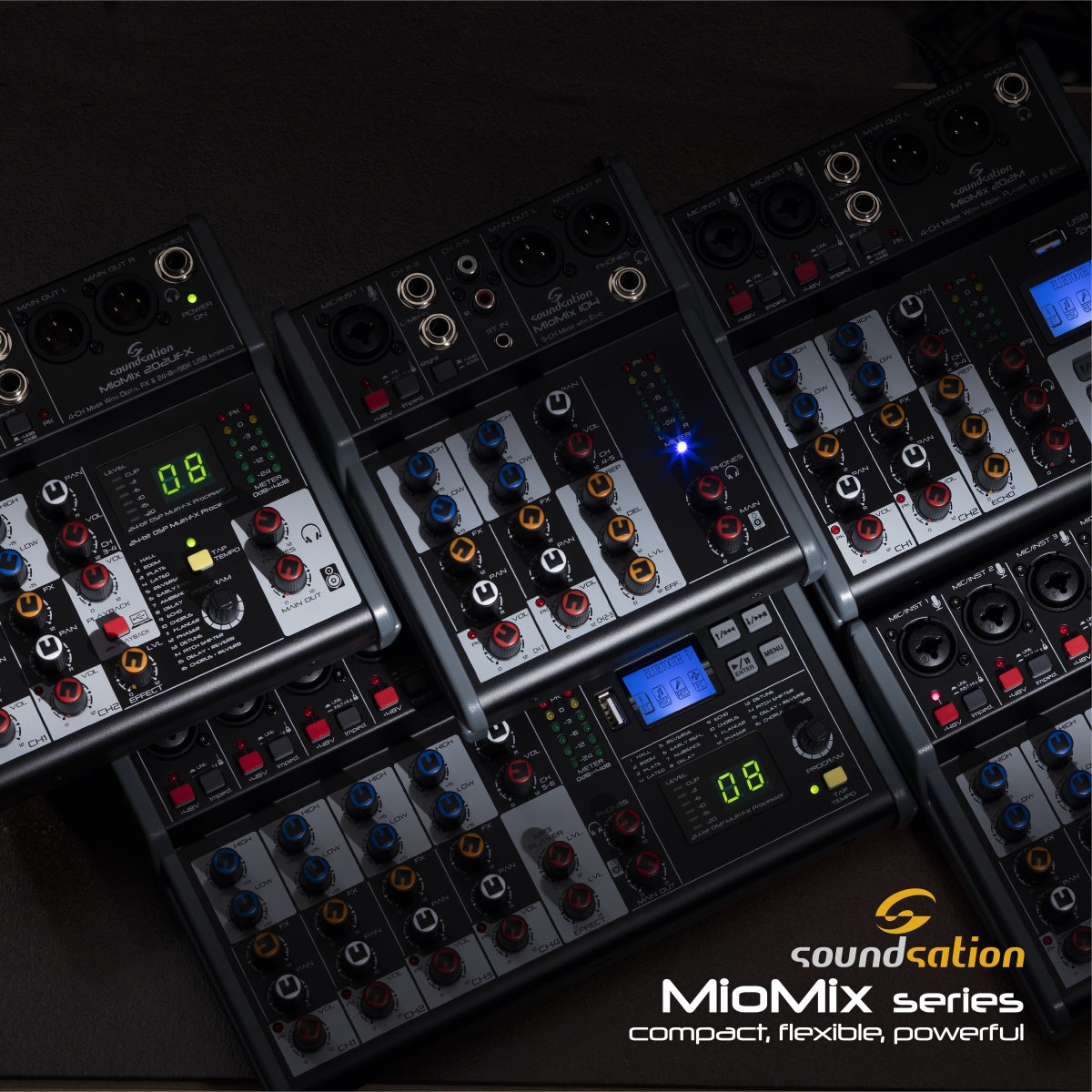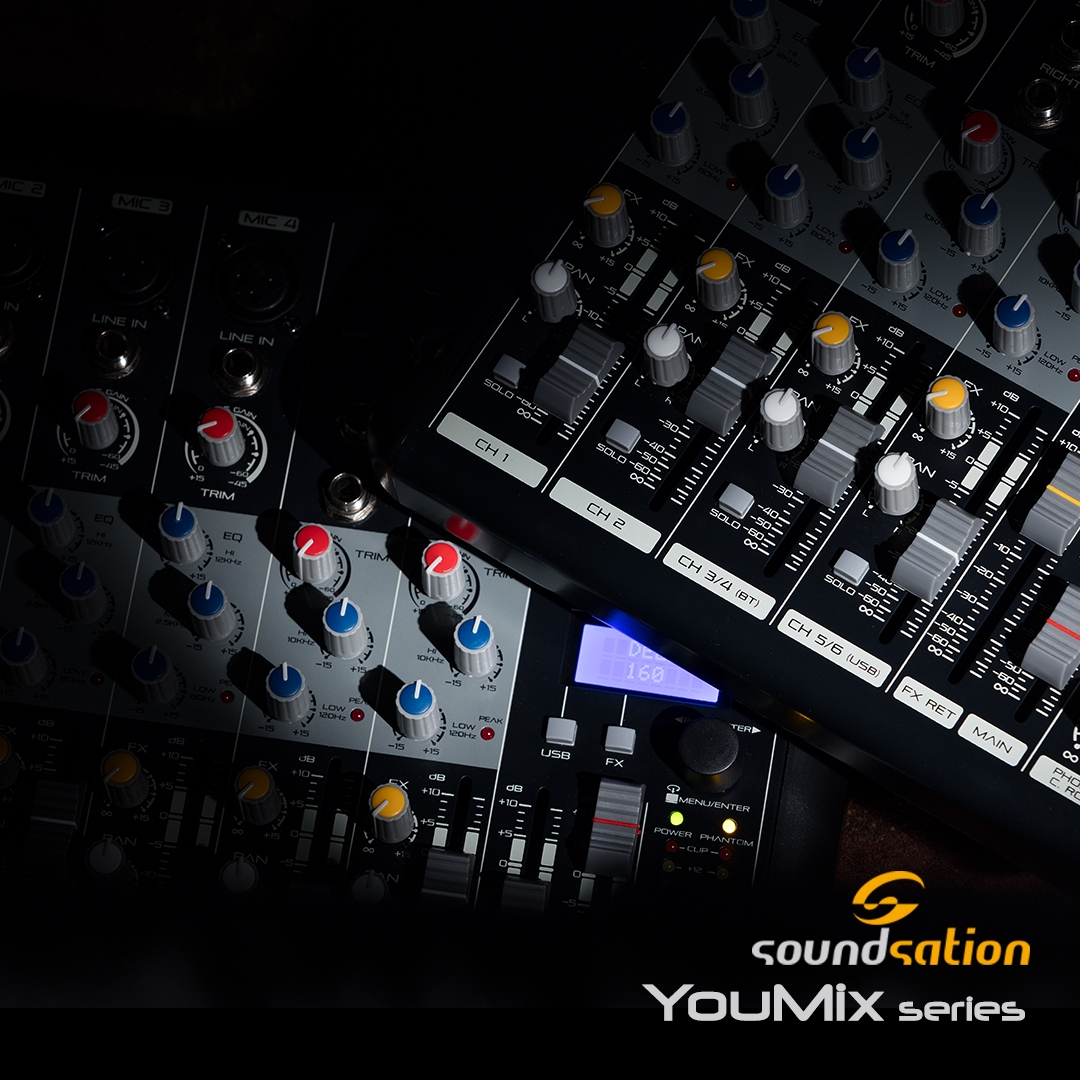Here we are with our second article dedicated to choosing the right mixing console. In this episode, we talk about one of the most popular musical activities in our country - the piano bar. It
’s also true that a mixer that’s fit for the piano bar could also work well for karaoke, another form of entertainment that has proved increasingly popular since the 90s. Let
’s go...
The Piano Bar is a form of musical entertainment that has been in vogue for a long time, but that has experienced great development since the early 90s. This is partly thanks to the progressive spread of multi-timbral electronic keyboards and backing track players.
On closer inspection, a common element amongst those who perform in piano bars is the use of pre-recorded backing tracks, a "fashion" owed to the appearance on the market of instruments capable of turning digital files into real songs. The MIDI file format was - and still is in part - the real protagonist of this revolution. More recently this has developed into higher-quality playback devices that support superior sound quality.
Even Karaoke, a practice born in the east and landing in Europe in the 90', makes use of backing tracks. In this case, a series of often amateur singers, for pure entertainment value, engage in live performance in front of an amused and highly-participating audience.

The right mixer? Simple and functional!
Turning to the practical aspects, which are those that
interest us, the key here is undoubtedly simplicity! As you have already
learnt, unlike a situation where there are many instruments to be amplified
(read our first article), in this case the number of channels is significantly
reduced. With karaoke in particular, ease of use is one of the main needs to be
addressed. As this is an activity specifically targeted towards amateur users,
it is essential that it is
easy for users to operate the equipment
without any existing technical knowledge.
The typical piano bar performance consists of a
musician who plays and sings, sometimes alongside another guest musician - also
with microphone and instrument. This makes for no more than a handful of
channels. In fact, in its typical formula the piano bar rarely includes more
than two musicians. Otherwise, we are talking about a trio or small band,
something that we have already dealt with...
For karaoke, the number of channels may drop even
further - with a stereo channel for the backing track and a couple of
microphone inputs for the singers being all that is required. In the cases of
both piano bars and karaokes, there are instances where both wired and wireless
systems are preferred over the other for the singers' microphones. You can find
some further guidance on this in our appendix below.
However, let's not forget that, once again, it will
always be desirable to have access to at least
one AUX line dedicated to
monitoring singers
. Listening to your own voice from the main sound system,
although a fairly widespread practice, is never ideal.
Channels, outputs & effects
If we were to recommend the number of channels
suitable for piano bars and karaoke, we could say that a minimum of 4 channels
could potentially be enough. The backing track in stereo (or through 2
unbalanced inputs) coming from any player, and two channels dedicated to
microphones.
However, it might be that we wanted to have access to a spare channel, for example for an additional microphone or backing track, in order to avoid the unexpected as much as possible during the live performance. In this instance, a slightly higher number of inputs could certainly be equally recommended. In general, however, and by approximation, a mixer with more than 8 channels would be seen as overkill for this application. That said, if the price difference was negligible, then a few more channels could make all the difference…
The spare
The concept of “a spare”
is something that
’s essential in this industry.
Without wishing to enter into complicated discussions about this
"layer" of security, having a "Plan B" can sometimes make
the difference between a successful evening and a disastrous one.
The interruption of a backing track, or worse going to
the microphone and suddenly finding it silent during a performance, is never a
pleasant thing. However, there are situations where making mistakes is even
more unacceptable, especially if the job is of a certain importance and, of
course, well-paid...
In this sense, it is worth providing a backup, of the backing track and the microphone, so as to be able to manage and solve the problem in as little time as possible. The simplest thing to do is to send the backing track to two physically independent machines so that if one crashes, the other continues to work.
There are different modes to activate simultaneous playback on two machines, which is based substantially on the sync of the machines (anyone wishing to deepen this aspect can easily further research this online). There are also several options to switch from one channel to another. In the simplest of cases you can simply activate the spare channels from the mixer as quickly as possible. Of course, it is possible that there will be a few seconds of interruption, but the choice between this and a heavily-disrupted performance is obvious.
As for the microphone, however, the advice is always
the same: whatever wireless system you use, provide a spare microphone with a
good-old cable straight into a mixer channel. Believe us, it is a simple yet
used method, at all levels!
Wiring and cables:
Two words should also be used to describe the wiring.
The concept is once again,
“clean and simple”. Yes, clean
in terms of precision of the cables and care in laying the cables and power
lines. But also avoiding tangles, cables that are too long or, even worse,
knotted or twisted. Make the setup as clean and simple as possible and it will
enable you to act quicker to solve any potential problems should they arise.
The voice: the microphone suitable for YOU!
The voice is one of the most important elements of a
piano bar performance, and just as often one of the few things performed
"live" during the show. Because of this, it should be approached with
the respect and care that it deserves, by investing a few extra euros in
purchasing a higher-quality microphone, but above all by choosing the most
suitable microphone for our vocal characteristics and technical needs.
Except for rare cases, a dynamic microphone is almost
always the most usable solution live, at least in applications of this type.
Sturdiness, greater rejection of feedback and ease of use make it more suitable
than condensers. Let's make it clear - there is no
“best”
microphone for the job, nor is there an absolute standard as we are often led
to think. There are good quality microphones that have different
characteristics, in terms of dynamic response and coloring, meaning that they
therefore adapt better to our voice. The secret? Go to a physical store and try
some of them, with your setup if possible, so as to precisely understand the
differing sound performances of different models.
Wireless systems
Why use wireless microphones? They certainly provide more freedom of movement and avoid the
hindrance of cables. However, if we consider the piano bar - even more than in
karaoke where the wireless system is almost an obligation for obvious reasons
related to performance - the wired microphone almost always remains a valid
choice.
What do you need to know about wireless systems? Well, first of all, although there are currently systems of remarkable quality and reliability, potential malfunction is always around the corner. This could be due to low battery level within the microphone itself, due to the occurrence of obstacles between the microphone and the receiver, or to a great many potential problems related to interference with the transmission frequencies.
There are systems with analogue or digital transmission, as well as simple and also highly evolved systems. If you have the knowledge and experience to make a choice in this area, then do so. However, our advice is that whenever wireless is not a necessity, a cabled microphone is always the safest and most appropriate choice.
Reverb
Many higher-quality mixers now offer inbuilt effects
such as reverbs, delay and chorus – meaning
that an external unit for these is not always necessary. At this point however,
and before any other digression on the topic, we want to start with a
recommendation. It is true that reverberation always creates a certain
"atmosphere" and restores depth, breath and magic to both voice and
instrument - but
please do not overuse this! This is the first rule.
Reverberation "adds", and therefore often also has the ability to
"tarnish" the intelligibility of the voice, especially if parameters
are not used correctly.
Which reverb to use? There is no firm rule for this, rather it should be evaluated from performance to performance, based on the characteristics of the performance space. If we were to perform in a restaurant with a hundred seats, it would be quite inappropriate to insert a "concert arena" preset with a reverberation decay time close to 3 seconds, though we hope this would be obvious...
In addition to the decay time, i.e. the time expressed in milliseconds or seconds in which the effect decays over, another essential parameter is the "pre delay". This can be expressed by other terms, but represents the time, in milliseconds, which elapses between the arrival of the signal to the reverberation device and the actual start of the reverberated signal. Before that, the sound is "dry", with no effect. We do not recommend using values too close to zero, but do not use this delay too heavily, as it can lead to strange acoustic delays that are generally unpleasant.

Ready to choose?
We have talked
about mixers, microphones, wiring and effects. Now we would like to guide you,
if possible, in the choice to be made.
The premise here is always that you do not have unlimited budget, something that would make the decision somewhat simpler.
Here are the characteristics to look at before choosing the right mixer for you:
- simplicity
- reliability
- integrated effects
- a minimum of 4 channels
- at least one AUX (for musician monitoring)
In addition to having identified the right mixer and the right microphone for you, other precautions that can make the
difference depend only on you as the user. These are care for the cables and
the instrumentation in general, as well as basic organisational skills and
precision.
In this sense, the SoundSation catalogue offers a number of viable options and, moreover, includes very complete products. This includes mixers in a number of channel configurations, with onboard effects and the possibility of pairing players via Bluetooth.
